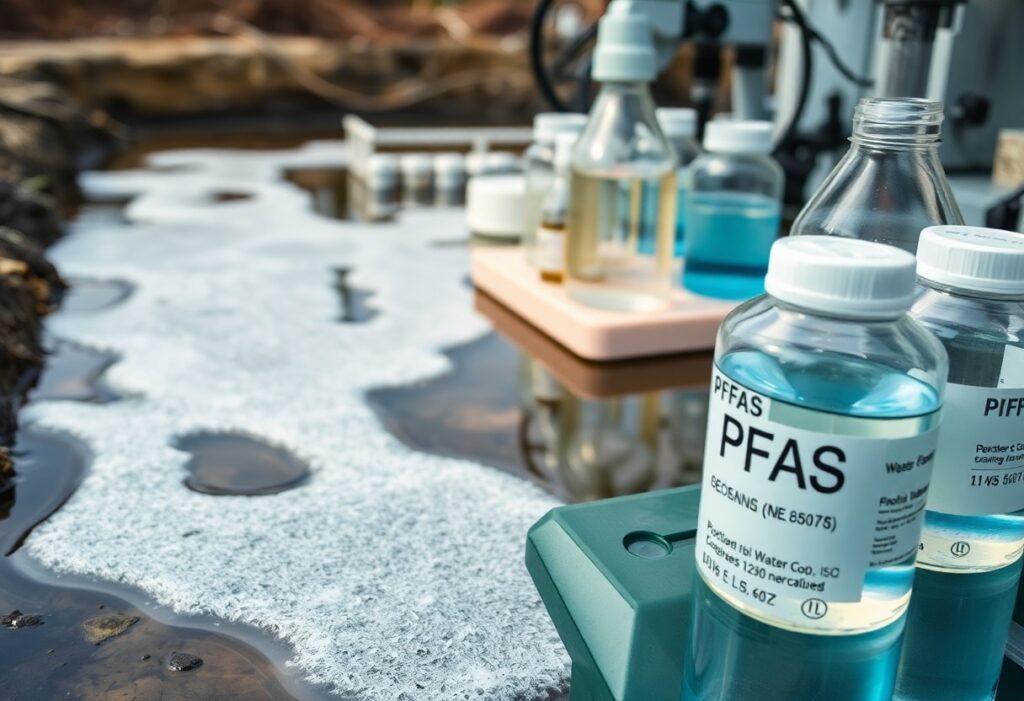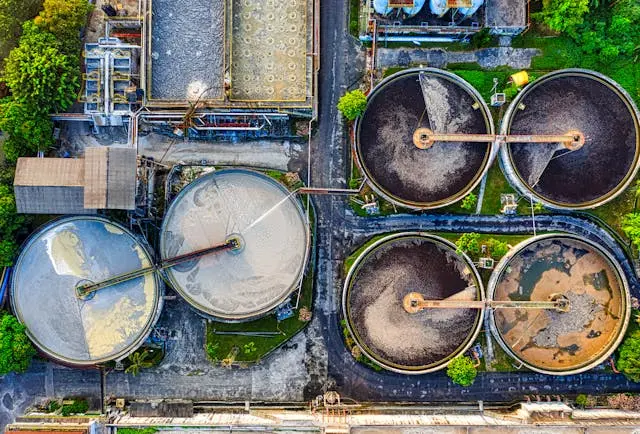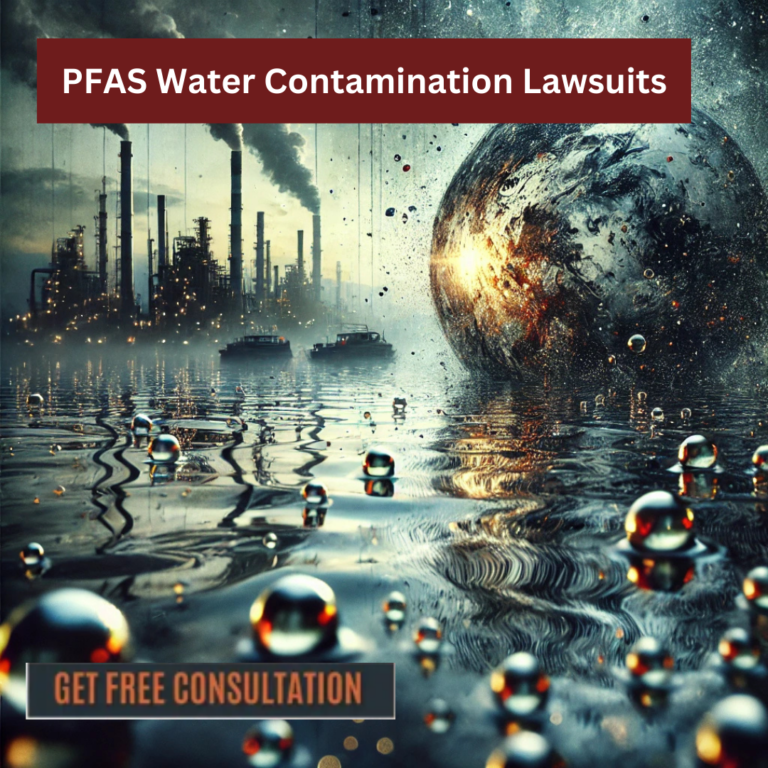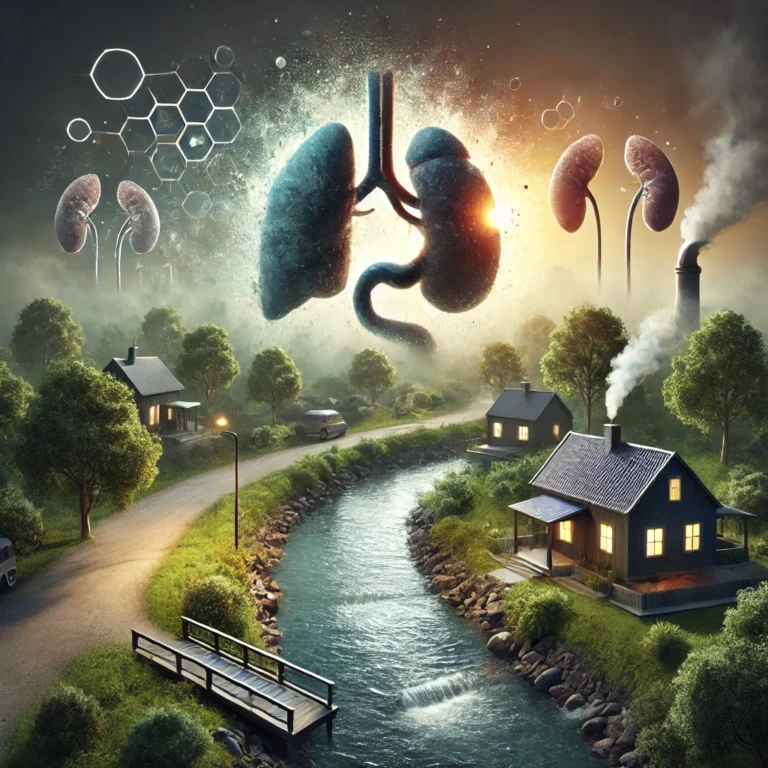Just as awareness of environmental hazards grows, PFAS contamination emerges as a significant threat to your health. These persistent chemicals, found in many common household products, can accumulate in your body over time, leading to serious health issues. Understanding the implications of PFAS exposure is necessary for safeguarding your well-being and that of your family. This post will explore the risks associated with PFAS, helping you make informed decisions to protect your health and the environment around you.
Key Takeaways:
- Health Risks: Exposure to PFAS substances has been linked to serious health conditions including cancer, liver damage, and immune system effects.
- Widespread Contamination: PFAS are found in various everyday products and can contaminate water supplies, posing an environmental risk for communities.
- Regulation and Action: Increased awareness is leading to stricter regulations and initiatives aimed at reducing PFAS usage and cleanup efforts in contaminated areas.
Understanding PFAS
For many, PFAS, or per- and polyfluoroalkyl substances, remain an invisible threat. These man-made chemicals have been integrated into hundreds of products, causing widespread contamination and health concerns. Understanding PFAS is vital to safeguarding your health and the environment. By recognizing their properties, sources, and associated risks, you can better navigate this complex issue and take informed actions to protect yourself and your community.
Definition and Chemical Properties
About PFAS refers to a group of synthetic chemicals characterized by a strong carbon-fluorine bond, which makes them highly resistant to degradation. This stability gives PFAS desirable properties for various applications, such as water repellency and stain resistance. However, these very properties contribute to their persistence in the environment, leading to accumulating health risks for you and future generations.
Sources of PFAS Contamination
Below are various sources of PFAS contamination that could be affecting your health and environment. These substances are commonly found in items like non-stick cookware, water-repellent clothing, and food packaging. Military firefighting foams, industrial discharges, and even contaminated water supplies can introduce PFAS into your community. Understanding these sources is important to mitigating exposure in your daily life.
Sources of PFAS contamination range from everyday household products to industrial processes. Non-stick cookware, stain-resistant fabrics, and waterproof outdoor gear often contain PFAS, making it important to consider what items you bring into your home. Additionally, firefighting foams used by military and emergency responders have contributed significantly to environmental contamination. You should also be aware that public drinking water sources can be contaminated by nearby industrial facilities, underlining the importance of testing water quality and advocating for cleaner community practices.
Health Risks Associated with PFAS
The health risks associated with PFAS (per- and polyfluoroalkyl substances) are alarming and should not be overlooked. Exposure to these chemicals has been linked to serious health issues such as liver damage, increased cholesterol levels, thyroid disease, and certain types of cancer. Additionally, it may disrupt your hormone levels, negatively impact your immune system, and lead to reproductive health problems.
Impact on Human Health
Human health can be significantly affected by PFAS exposure. Studies indicate that these substances can accumulate in your body over time, leading to chronic health issues. The long-term exposure may increase the risk of developing serious conditions, including kidney and testicular cancers, as well as fertility issues. It is vital to be aware of these risks, particularly if you live in contaminated areas.
Vulnerable Populations
Behind the science of PFAS, certain populations are more susceptible to its harmful effects. Pregnant individuals, infants, and nursing mothers face heightened risks, as PFAS can cross the placenta and be transferred through breast milk, impacting the development of your child. Additionally, people with pre-existing health conditions may be more adversely affected.
PFAS exposure disproportionately impacts vulnerable populations, including children, pregnant women, and those with compromised immune systems. Children are particularly at risk due to their developing organs and higher rates of exposure relative to their body weight. For pregnant individuals, exposure can lead to adverse outcomes such as low birth weight and developmental delays in your child. Furthermore, communities near industrial sites where PFAS are manufactured or used often experience higher exposure levels, making it imperative for you to stay informed about your environment and advocate for your health.
Environmental Implications
All across the globe, PFAS contamination poses significant environmental challenges. These synthetic chemicals not only infiltrate soil and water systems but also bioaccumulate in wildlife, leading to serious ecological consequences. As you learn about the broader impacts of PFAS, it becomes clear that addressing this contamination is vital for the health of ecosystems and the safety of your local environment.
PFAS Longevity in the Environment
Environmental persistence of PFAS is a concerning reality. These substances can remain in the environment for many years due to their chemical stability, making it exceedingly difficult to eliminate them. As you consider the implications of PFAS exposure, consider how their ability to linger for decades can contribute to long-term health risks for you and your community.
Contamination of Water Sources
The presence of PFAS in your water supply poses serious health risks. These chemicals can infiltrate drinking water sources, stemming from industrial discharge, firefighting foam use, and even household products. As you evaluate your health and the safety of your environment, being aware of potential water contamination becomes imperative, since ingesting water with PFAS can lead to numerous adverse health effects.
Longevity is a significant factor when discussing PFAS contamination of water sources. Once these chemicals enter your water supply, they are not easily removed and can persist indefinitely, leading to a continuous exposure risk. This prolonged presence means that even small concentrations can accumulate over time, compromising not just your health but also the quality of drinking water for entire communities. Identifying and addressing the sources of this water contamination is critical for ensuring a safer and healthier environment for you and future generations.
Regulatory Landscape
Not all regulatory bodies are adequately addressing the ongoing PFAS contamination crisis. While some states have enacted stricter limits, the lack of a cohesive national strategy creates discrepancies in guidelines, leaving many communities vulnerable. As you navigate these regulations, it’s vital to stay informed about local and national developments affecting your health and environment.
Current Regulations and Guidelines
Along with growing public awareness, recent years have seen a rise in regulatory efforts to manage PFAS levels in drinking water and consumer products. Organizations like the EPA have begun implementing guidelines, but these remain non-enforceable. As you advocate for your health, understanding these regulations can empower you to demand safer standards.
Challenges in Regulation Enforcement
Beside the lack of cohesive regulations, enforcement remains a significant challenge. Many local authorities lack the resources to monitor PFAS levels adequately, allowing contamination to persist unnoticed. This poses a risk to your health, as exposure continues without a systematic approach to eliminate the problem.
Another significant hurdle in regulating PFAS contamination is the complexity and cost involved in identifying and eliminating these substances. Many water treatment facilities and industries are ill-equipped to manage PFAS testing and remediation effectively. Additionally, the long-lasting nature of PFAS compounds complicates the cleanup efforts. As a result, you may find that even stringent regulations can fall short in practice, allowing these harmful chemicals to remain in your environment and endanger your health.
Mitigation and Remediation Strategies
Your awareness of PFAS contamination is the first step towards safeguarding your health. Implementing effective mitigation and remediation strategies is important to reduce exposure and ensure clean water supplies. Solutions include advanced filtration systems, regular monitoring for PFAS levels, and community-led cleanup initiatives that work to remove contaminated sites. These strategies not only enhance your safety but also contribute to a healthier environment for everyone.
Techniques for Reducing PFAS Levels
To effectively reduce PFAS levels, you can utilize several techniques including activated carbon filtration, reverse osmosis systems, and high-pressure membrane technologies. These methods target and remove PFAS compounds from drinking water and other sources, significantly lowering your exposure risk. Implementing these technologies in your home or community can provide substantial improvements in water quality and safety.
Role of Community Action
Below the surface of PFAS contamination lies the power of community action, where collective efforts can foster real change. When individuals come together, they can advocate for cleaner water policies, initiate local cleanup projects, and demand accountability from industries contributing to pollution. Your involvement in local advocacy groups can amplify voices that seek to address the PFAS crisis effectively.
Understanding the impact of community action is vital in tackling PFAS contamination. Strong, unified efforts can lead to effective change such as policy reform and enhanced regulatory measures that protect your health. Engaging in local discussions and initiatives allows you to educate others on the dangers of PFAS and inspire collective solutions. Through grassroots activism, your community can push for the development of sustainable practices and demand transparency from industries, creating a safer environment for all.
Consumer Awareness and Safety
After understanding the serious implications of PFAS contamination, consumer awareness becomes vital. You play a key role in protecting yourself and your loved ones from these harmful substances. Being aware of the potential sources of PFAS in products can help you make informed choices that prioritize your health and safety.
Identifying PFAS in Products
Below are some strategies for identifying PFAS in the products you use:
- Check labels for terms like “water-resistant,” “stain-resistant,” or “non-stick.”
- Research brands known for using PFAS in their manufacturing processes.
- Choose products from companies committed to transparency regarding their ingredients.
Tips for Reducing Exposure
Below are some practical tips to help you reduce exposure to PFAS:
- Opt for natural materials over synthetic ones, especially in cookware and textiles.
- Avoid fast food packaging and water-repellent items.
- Filter your drinking water using systems that effectively remove PFAS.
In fact, taking these steps can significantly lower your risk of exposure to harmful PFAS. By making conscious choices in your everyday life, such as purchasing items free from perfluoroalkyl substances, you empower yourself to lead a healthier life. Additionally, consider using reverse osmosis systems for drinking water. Assume that every small change counts towards a safer environment for you and your family.
Conclusion
As a reminder, PFAS contamination poses significant health risks that should not be overlooked. It is vital to educate yourself about these harmful chemicals, often found in everyday products, and to take proactive measures to protect your health and that of your family. By staying informed and advocating for safer practices, you can play an crucial role in mitigating the risks associated with PFAS exposure in your life.

















